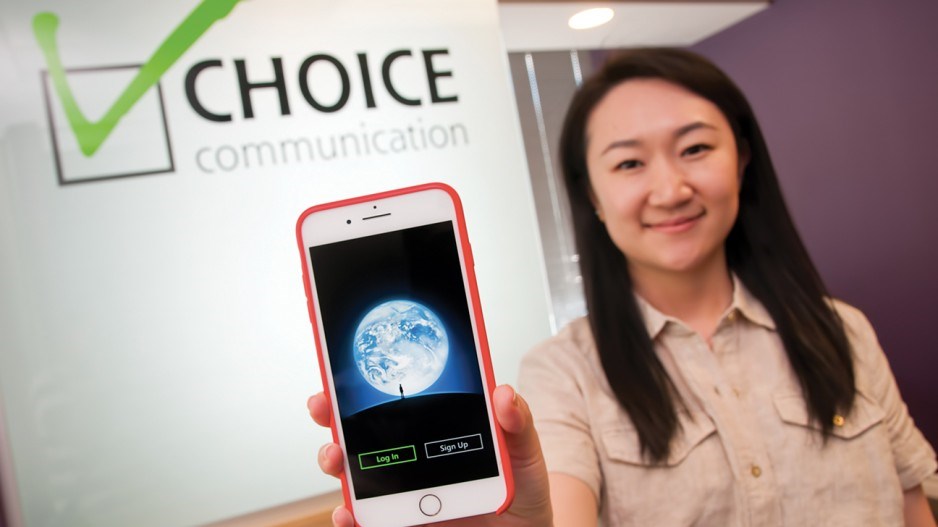No one knows how many social media apps there are on Kumiko Ide’s phone – not even Ide herself.
“Oh my gosh, I have to look to check,” said Ide, a Vancouver-based marketing consultant whose previous campaigns include retail giant Nordstrom’s (NYSE:JWN) Canadian launch and Destination Canada’s international social media initiatives. “Because I work in the digital marketing space, I reached a tipping point a few years ago – with so many apps on my phone – that I had to purge some of them. But I still have quite a few.”
That is increasingly the reality for Vancouver-area businesses: as the city’s population (and retail consumers) diversify, shoppers – often of international origins – are bringing their preferred social media platforms with them. It means that local enterprises have to think increasingly beyond the North American apps – Facebook (Nasdaq:FB), Google (Nasdaq:GOOG), Twitter (NYSE:TWTR) and Instagram – to reach lucrative, underserved audiences.
Nowhere is this fragmentation of apps more apparent than in Asia, which, incidentally, is the origin point of the largest group of non-North American consumers in B.C. According to data from consultancy We Are Social, the three largest markets in East Asia (China, Japan, South Korea) each had a dominant social media platform not of western origin.
In China, it’s Tencent’s WeChat; in Japan, Naver Corp.’s Line is the favourite. And one would be hard pressed to find anyone with a Korean connection without KakaoTalk.
“Social media is ever-changing, and it takes a lot of efforts to try to catch up,” said Helen Yu, director of Vancouver-based Choice Communication, which specializes in cross-cultural marketing. “It is even more challenging when there are platforms other than the ‘mainstream’ ones … that are growing fast and, in some ways, surpassing western counterparts.”
What should make local companies take note of these apps is the numbers. KakaoTalk has 50 million monthly active users, reaching 97% of smartphones in South Korea. Line’s reach – at 217 million monthly active users as of 2016’s fourth quarter – stretches far beyond Japan into markets like Taiwan, Thailand, Indonesia and Spain. The most staggering number comes from WeChat. As of March 2016, it had 697 million monthly active users, and many are already in Vancouver.
“If you are a Vancouver-based business, whether you are an SME [small or medium-sized enterprise] or an international brand, the numbers are staggering,” Ide said. “Whether you are expanding e-commerce trying to reach customers in Asia or you are trying to reach Asian customers in Vancouver, the community is very big. You would be remiss as a brand to not activate on these communities.”
In Vancouver, business meetings within communities made up of new Chinese immigrants will often see people scanning each other’s WeChat QR codes instead of exchanging business cards, Yu said.
“Usually, after we explain the benefits and reach of WeChat, most clients are very interested in having a presence. But as with most social media platforms, it takes time to cultivate and engage the audience. The problem is further complicated with the language barrier because Chinese is the preferred posting language.”
For Ide, any businesses wanting to jump into these social media platforms need to know what the target audience is, as well as the nature of the apps.
For example, WeChat and Line are messaging apps and can operate differently from Facebook and Twitter. As such, Ide suggests that companies wanting to approach WeChat or Line should identify “influencers” – people on these networks with a large group of followers – as an entry point.
“With Nordstrom, for example, instead of creating a specific WeChat campaign, we found more success with sales associates who had a community following them,” she said. “If these ‘influencers’ texted out to their followers that there’s a sale tomorrow, we would have pre-orders coming in – with some items selling out – even before the sales started.”
Crystal Kwon, director of Citizen Relations’ agency in Vancouver, said her group has engaged in some non-North American platforms, mostly WeChat. Kwon added that with Citizen being acquired by BlueFocus, China’s largest public relations firm, a few years ago, she anticipates her office will be doing more on Chinese social media. She added, however, that the decision to go with WeChat versus Facebook or other traditional means requires careful consideration.
“Asian Canadians make up over 40% of the population in the Lower Mainland, and there’s no doubt that this demographic has strong buying power,” Kwon said. “But it’s important to remember that Asian Canadians are not one monolithic group. There is a large segment of second-generation young Asian Canadians who might best be reached through English-language marketing, but that still may also celebrate cultural events like Chinese New Year.
“The most important thing is making sure you’ve done your research and understand [what] audience you are trying to reach – and communicating with them in the way they are looking to get information.”




